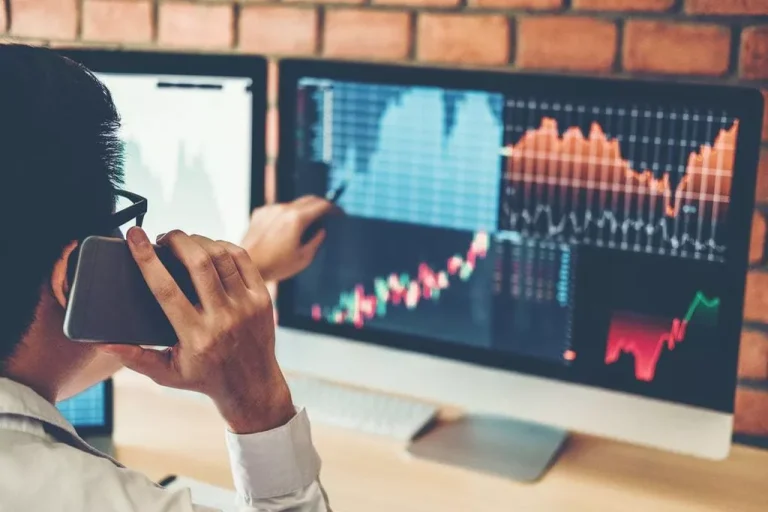Content
When you’re just starting out with crypto, there are a few “essential” things that you need to figure out and understand, as soon as possible. One of these things has to do with cryptocurrency wallets – rather, what they are, how they work, and how you can start using them, as well. If you keep assets on centralized exchanges like Coinbase, Kraken or Gemini, you have to use a custodial wallet. Custodial wallets are by far the most convenient because accessing your crypto is the same as https://www.xcritical.com/ a login experience for an online broker.
How Cryptocurrency Wallets Work
Read reviews and research wallets to ensure you’re choosing one that is reliable. When it comes to managing your funds, security should always be the top priority. There are several security features you’ll want to look for when choosing among different crypto wallet types. Now, if you’re always on the move, mobile wallets might just be what you’re looking for. These are apps that you can install on your smartphone or tablet, giving you the Mining pool ability to manage your crypto and make transactions directly from your device, wherever you are.
What Is a Crypto Wallet? Explaining Cryptocurrency Wallets in 2024
But with a hardware wallet like the Ledger Flex, you get the option to connect via Bluetooth, providing extra convenience for users who want quicker access without needing to plug how do crypto wallets make money in a USB. They’re convenient for day-to-day use, especially when it comes to making quick cryptocurrency payments in stores or online. Many mobile wallets also come equipped with advanced security features, such as biometric authentication (like fingerprint or face recognition) and encryption, which help keep your assets secure. If your computer gets infected with malware or a virus, your funds could be at risk. Additionally, they are less convenient for on-the-go transactions since you’re tied to a specific device, making it a bit less flexible for users who need quick access.
What Are the Different Types of Cryptocurrency Wallets?
Just like in the real world, no two wallet addresses are ever the same, which means that there is no chance that somebody else would get your funds. Also, there is no limit to the number of wallet addresses you can create. In the above section, I used the example of a real-world leather wallet, insofar that the wallet physically stores your cash. However, things are slightly different in the digital world of cryptocurrencies and blockchain technology.
How to choose the best crypto wallet
Just remember to keep your private keys safe and never share them with anyone. With a crypto wallet, you can enter the exciting world of blockchain technology and begin exploring various decentralized applications. To start using your wallet, you’ll need to transfer cryptocurrency to it. Get your wallet’s public address (often displayed as a QR code) and give it to the sender, such as your personal crypto exchange account, to receive funds. However, just like computers, mobile devices are vulnerable to malicious applications and malware infections. So it’s a good idea to encrypt a mobile wallet with a password and back up private keys (or seed phrase) in case you lose your phone or it stops working.
However, both wallets offer top-tier security for their users’ crypto funds. I am hoping that you now have a very good understanding of what a cryptocurrency wallet, how the technology works and the different types available. You should also have a good idea of how to protect your wallet from hackers, as well as what information you reveal or don’t reveal when you use it. To make sure you have a full understanding, I will quickly explain the role of a wallet address, as well as a private and public key, as they are all related. Are you looking to learn about the basics of cryptocurrencies and blockchain technology?
Of course, you can split the difference here, just as you would in the real world. You don’t go walking around with your whole net worth in your physical wallet. You keep most of your assets in a secure place — a bank, for example — and go out only with what you need. Similarly, you can keep most of your crypto in a hardware wallet while your pocket money is in a software wallet. While pros say “wallet” to describe what safeguards your cryptocurrency, it’s more accurate to think of it as holding keys to a virtual address where your holdings are attributed.
- Instead, they provide the tools necessary to access and spend your crypto holdings.
- Paper wallets can require a bit of a learning curve and don’t integrate well with dApps, so their utility is limited in some areas.
- These two keys are all that stand between owning crypto and not owning it.
- For those interested in maximizing opportunities, having multi-chain support can also lead to better access to liquidity pools and improved trading options.
- Some hardware crypto wallets feature a pretty unassuming design – they might look like, say, USB sticks.
This will allow you to access your funds on other devices if your computer stops working or becomes inaccessible. Crypto wallets play an important role in driving the adoption and use of cryptocurrencies by providing a no-code tool for individuals to engage with the crypto space. They aim to simplify the complex aspects of cryptocurrencies, making it easier for individuals, including non-technical users, to understand and manage their digital assets. User-friendly wallets attract newcomers to the crypto space, facilitating their entry into the ecosystem. So hardware wallets are designed for safekeeping of crypto assets and less for transactions. But software wallets are only as good as their programming, and hackers are always looking for weak points in the security at brokers and crypto exchanges.
Anyone with the seed phrase is able to gain full control of the funds held in that wallet. In a case scenario where the seed phrase is lost, the user also loses access to their funds. So it is imperative to keep the mnemonic phrase in a secure location, and to not store a digital copy of it anywhere. In order to perform various transactions, a user needs to verify their wallet address via a private key that comes in a set of specific codes.

The purpose of this website is solely to display information regarding the products and services available on the Crypto.com App. It is not intended to offer access to any of such products and services. You may obtain access to such products and services on the Crypto.com App. It’s best to read as many reviews as possible to find one that fits your needs while ensuring your keys are secure.
A wallet is a software application used to view your balance and send or receive bitcoin. The wallet interfaces with the blockchain network and locates your bitcoin for you. Because bitcoins are data inputs and outputs, they are scattered all over the blockchain in pieces because they have been used in previous transactions. Your wallet application finds them all, totals the amount and displays it.

Crypto wallets are often compatible with multiple cryptocurrencies and blockchain networks. This interoperability allows you to manage various digital assets within a single interface. You can trade a wide range of cryptocurrencies, participate in community activities, and explore DApps across different blockchain ecosystems. The wallet also contains an address, which is an alphanumeric identifier generated based on the public and private keys.
Instead, they provide the tools necessary to access and spend your crypto holdings. In other words, these wallets can generate the necessary information to send and receive cryptocurrency via blockchain transactions. A cryptocurrency wallet stores digital currency and other digital assets.
A cryptocurrency wallet is a place to store your keys to cryptocurrency such as Bitcoin, Ethereum or one of the many thousands of others. Like a physical wallet, a digital crypto wallet provides a place to safeguard your currency and a means to access it when you want to use it. With cryptocurrency, there’s no tangible currency, no paper money to place within a physical wallet or purse. Cryptocurrency exists on the blockchain, and there’s no physical manifestation that a user touches. But there’s still a need for individuals and organizations to understand ownership of cryptocurrency assets and to be able to know how much is held, much like a bank account provides a bank balance. Crypto.com Onchain is non-custodial, which means that users retain full control of their private keys and assets.





























